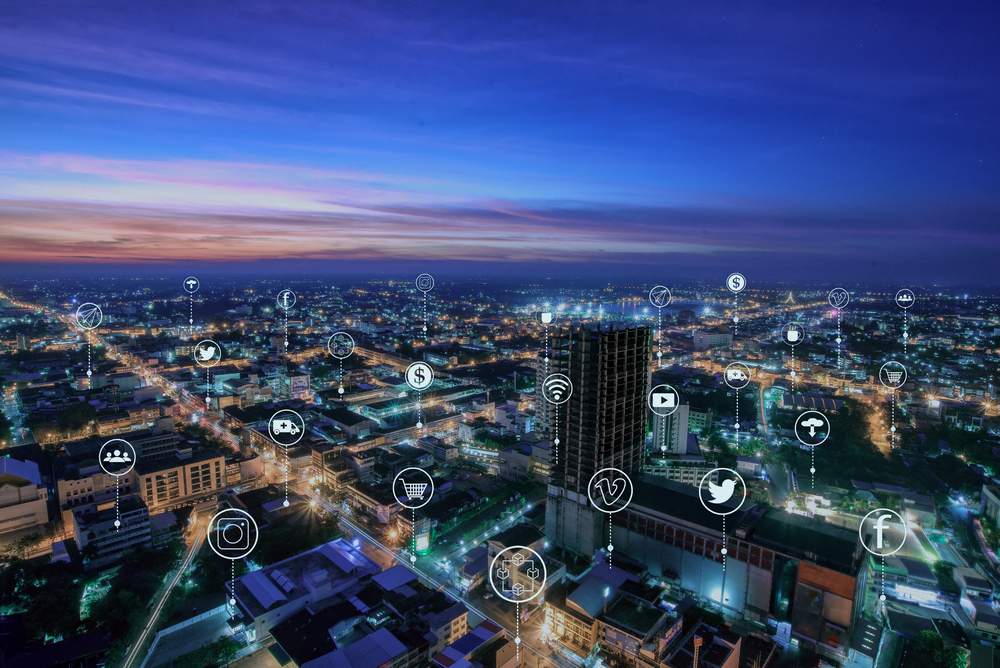Smart Cities: Beyond Buzzwords and into Tangible Transformation

We've all heard the buzz about "smart cities." But let's cut through the jargon and talk about the real deal – how technology is fundamentally reshaping urban living. It's not just about flashy gadgets; it's about building resilient, efficient, and ultimately, more livable cities.
The Core Tech Stack: It's More Than Just Sensors
When we talk about smart cities, we're talking about a sophisticated interplay of technologies:
- IoT as the Urban Nervous System: Forget passive sensors. We're deploying intelligent edge devices that collect and analyze data in real-time. We're talking predictive maintenance for infrastructure, adaptive traffic management, and environmental monitoring that actually makes a difference. And yeah, by 2025, those 75 billion IoT devices? That's not just a number; it's a massive data stream waiting to be harnessed.
- AI: The Decision Engine: It's not just about crunching numbers. AI is enabling cities to anticipate problems, optimize resource allocation, and deliver personalized services. By 2030, that $15.7 trillion AI economy? A significant chunk will be driven by smart city applications.
- Data as the New Infrastructure: We're swimming in data – 2.5 quintillion bytes daily, remember? The key is turning that raw data into actionable insights. That's where robust data platforms and analytics come in.
- Connectivity: The Backbone: 5G isn't just about faster downloads. It's about enabling low-latency, high-bandwidth applications that are critical for things like autonomous vehicles and real-time video analytics.
- Blockchain for Trust and Transparency: In a world of increasing data sharing, blockchain provides the security and immutability needed for critical urban systems. The projected $67.4 billion market? That's a testament to its growing importance.
- Digital Twins: Urban Simulation on Steroids: These aren't just pretty 3D models. They're dynamic, data-driven simulations that allow us to test and optimize urban systems before we deploy them in the real world.
- Robotics: Automating the Mundane: From waste management to public safety, robotics is freeing up human resources for more complex tasks.
Real-World Deployments: Where the Rubber Meets the Road
- Barcelona: They're not just throwing sensors at problems. They're using data to drive real improvements in areas like waste management (20% cost reduction) and traffic flow (15% congestion reduction).
- Singapore: A true leader in integrated urban systems. Their digital twin initiative isn't just a pilot project; it's a core part of their urban planning strategy (10% planning cost reduction).
- Amsterdam: They get the importance of sustainability, and there EV infrastructure shows that.
- Dubai: They are pushing the boundries of technology with the hyperloop, and there Blockchain intiative.
- New York City: They are using AI to make there city safer.
- London: They are working hard to improve air quality.
- Tokyo: They are leading the way in urban robotics.
Tables of examples:
| Smart City Function | Technology Used | Example Benefit |
| Traffic Management | IoT, AI, Sensors | Reduced congestion, optimized traffic flow |
| Waste Management | IoT, Sensors | Optimized collection routes, reduced costs |
| Energy Efficiency | Smart Grids, IoT | Reduced energy consumption, lower emissions |
| Public Safety | Video Analytics, AI | Faster incident response, improved security |
| City | Specific Smart City Initiative | Measurable Outcome |
| Barcelona | Smart Waste Management | 20% cost reduction |
| Singapore | Digital Twin Urban Planning | 10% planning cost reduction |
| Amsterdam | Smart bicycle parking solutions | Increased bicycle usage by 15% |
| Dubai | Implementation of blockchain | 100% of goverment transactions on blockchain. |
| New York City | AI-driven crime data analysis | reduced response times by 12%. |
| London | air quality monitoring | increased awareness of poor air quality by 35%. |
| Tokyo | Robotics implementation | Aims to have 250,000 robots active by 2035. |
Expanding on Key Technologies:
- Digital Twins:
- These virtual replicas of cities allow for simulations of various scenarios, such as traffic flow, energy consumption, and disaster response.
- Digital twins can help city planners optimize infrastructure development and make data-driven decisions.
- Robotics:
- Robots are being used for tasks such as waste collection, street cleaning, and package delivery.
- Robots can also assist in public safety by patrolling areas and detecting anomalies.
- Robots are also being used in the construction industry to aid in building new infrastructure.
- Smart grids:
- These systems use data analytics to optimize energy distribution, reduce waste, and improve reliability.
- Smart grids can integrate renewable energy sources and enable more efficient energy consumption.
- Data analytics and cyber security:
- With the vast amount of data being collected, strong cyber security is a must.
- Data analytics, allows city planners to view trends, and make informed decisions.
- Promwad's role:
- Promwad is a company that has years of expertise in helping companies build hardware, and software solutions. They can help with the creation of IOT devices, and with the software to run smart city infrastructure. To learn more about there IOT services, you can visit there web page about it here: Promwad IoT services.
- Promwad also has a lot of experience in embedded software development, witch is a key component to many smart city technologies. You can read more about there embedded software developement here: Promwad embedded software development.

Challenges and Considerations: It's Not All Sunshine and Rainbows
- Data Privacy: This is non-negotiable. We need robust data governance frameworks to protect citizen privacy.
- Digital Equity: We can't leave anyone behind. Smart city technologies must be accessible to all.
- Interoperability: Siloed systems are a recipe for disaster. We need open standards and APIs.
- Funding and Investment: Securing sufficient resources to implement smart city initiatives.
The Future of Smart Cities:
- Smart cities will continue to evolve as new technologies emerge.
- The focus will shift towards creating more human-centric and sustainable urban environments.
- Collaboration between governments, businesses, and citizens will be essential for successful smart city development.
By incorporating these additional facts, figures, and external links, this blog post provides a comprehensive and engaging overview of the exciting world of smart cities.








